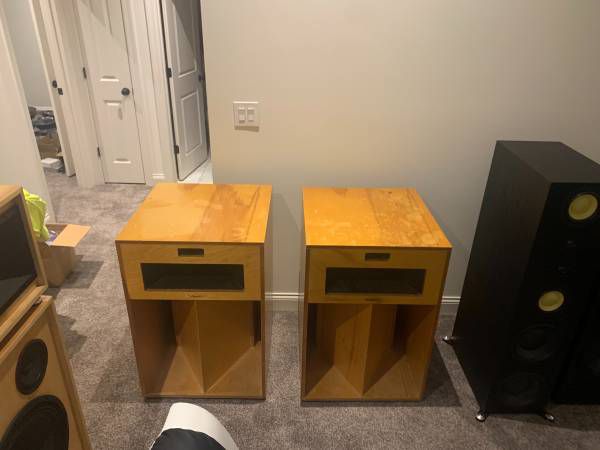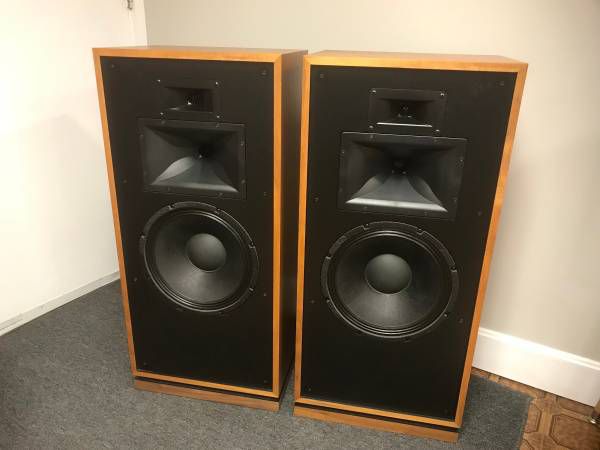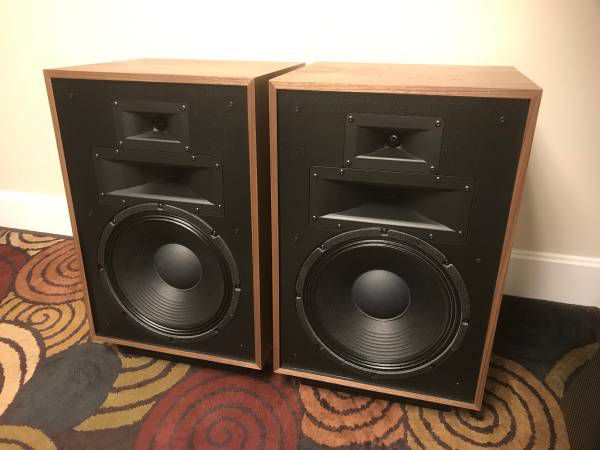-
Posts
2589 -
Joined
-
Last visited
-
Days Won
1
Content Type
Forums
Events
Gallery
Everything posted by Edgar
-
https://www.tubesandmore.com/search/node/kt77/
-

Crossover A Klipschorn cap replacement help
Edgar replied to Aoran994's topic in Technical/Restorations
Sorry, Travis, I've been offline for the past week or so, and I haven't followed this thread. The explanation is multifaceted: In the simplest, non-audiophile case, a designer just resorts to the math. The speaker is 8 Ohms, assumed resistive, and the crossover frequency is X Hz, so just plug the numbers into the formulas and find the values for the capacitors and inductors. Look in the catalogs for the parts that come close to the desired values at the desired prices, and specify those for production. And this, by the way, is what a lot of DIY builders do, too. For serious audiophile situations, though, the math is just the starting point. Inductors have resistance and capacitance and hysteresis. Capacitors have resistance and inductance and dielectric nonlinearities. And, of course, loudspeaker drivers have resistance and inductance and capacitance and nonlinearities and mechanical resonances, some of which change with frequency. So the crossover (balancing network) design must take a "systems" approach -- everything affects everything else. And that interaction is the reason that simply replacing a single component with another that is nominally of the same value might affect the entire system in unexpected ways. Now, such a substitution is not likely to turn a diamond into a lump of coal, meaning that it probably won't affect the sound quality of the speaker in profound ways, but it will change it. Most of those non-ideal characteristics can be modeled mathematically. And the resulting circuit analysis can be as complicated as the designer chooses. Ideally, the circuit is optimized such that all of the components complement each other, but even that's not the end of the story. For a stereo pair, the speakers need to complement each other, too. And even that's not the end of the story. There is plenty of evidence that two components that measure the same can sound different. So, ultimately, the final arbiter of all of this is the listening test. Listening tests can guide us not only on the configuration of the balancing network (crossover frequencies, filter orders, individual gains), but on the types of components to use (electrolytic or film, iron-core or air-core, etc.). And even that's not the end of the story. The real end of the story is decided by the bean-counters. Every product has a target bill-of-materials (BOM) cost. If the BOM cost is exceeded, back to the drawing board. -
Exactly how is that scam supposed to work? I take my $300 to the supposed location, and somebody hits me over the head with a baseball bat and takes my money?
-
I tried to check that Atlanta ad before I posted my alert, but by then it had been deleted. Sorry for the false alarm.
-
-
https://stlouis.craigslist.org/ele/d/pevely-klipsch-la-scala-speakers/7550147048.html No affiliation.
-
Snake your zip cord through a section of garden hose. Nobody will ever be the wiser.
-
I remember that. "2 + 2 = 5, for sufficiently large values of 2".
-
"Magic" is the only accurate description of that dimension, as in "magical thinking".
-
@Dave A, research by Medwin indicates that the perfect length is actually 57 1/8th inches. Whom to believe? Taking the myth slightly off-topic, as an engineer who specializes in DSP, I'm just waiting for somebody to claim that they can hear differences in the CPUs used to perform the arithmetic.* *There are some architectural differences that could potentially affect the audio; fixed-point vs. floating-point, 32-bit vs 64-bit, etc. But any two processors that implement the same arithmetic in the same format will produce the same results. If they don't, then at least one of them is broken.
-
Klipsch Palladium P38 speakers with matching P312 sub in Merlot finish. https://stlouis.craigslist.org/ele/d/edwardsville-klipsch-palladium-speakers/7547081058.html Unfortunately, only photos of the boxes in the ad. No affiliation.
-
That's a lot of very long-term employees. Must be doing something right. Also, striking difference between "Arkansas accent" and "Missouri accent". You'd never know that we're neighbors.
-
https://community.klipsch.com/index.php?/guidelines/
-
Yes, I've done plenty of assembly language programming. I actually like it -- the programmer has complete control over everything. It's even worse than that. At least C/C++ are compiled. The language of the day seems to be Python, which is interpreted, and takes about 10x as long to run as compiled C to do the same thing. But processing power is so great that few people care, or even notice.
-
In 1993 I developed a signal processing technique that is so computationally-intensive that I thought I would never see it run in real-time during my lifetime. By about 2010 it could run in real-time on a telephone. It's an amazing time to be an engineer.
-
https://audiokarma.org/forums/index.php?forums/the-klipsch-korner.131/
-
Well, you can Zobel an impedance peak https://community.klipsch.com/index.php?/topic/187697-measurement-systems/&do=findComment&comment=2436802. As for the rest, I can usually model horn response and driver response, and compensate for them, in DSP, unless they're really unusual.
-
The pitfalls of keeping a low profile.
-
Again, I don't want to name any names, but at least a few of them have tried to participate in various audio forums and been thrown-off of them, either for blatant commercial self-promotion or for rudeness to other members.
-
@ClaudeJ1, you and I have had the privilege of rubbing elbows with some heavy-hitters in this (and other) industries. Some of them, like Roy, are down-to-earth country boys who will take you fishin' in the morning and then dig deep into the tech in the afternoon. Others, who shall remain nameless, can be real prima donnas who will berate you for asking the time of day. I guess it's the same everywhere.
-
Free advertising. He's retired and living in picturesque Bloomington, Indiana. He's almost 82, now, so slowing-down a bit. Don's Website I think that the world has finally figured out that horns don't have to sound like "horns" if they're designed properly. Modern computational power and finite element analysis have made that possible. 3D printing has made prototyping much easier.
-
I corresponded with Don as recently as last December, then he suddenly stopped responding. I don't know whether there is a health problem, or some other pressing matter.
-
Yes, I'm familiar with that paper by Don Keele. (And with Don Keele himself. I worked with Don at Electro-Voice, and got along with him just great. That's part of the reason that I wonder if PWK and I would have gotten along -- I think that we would have either "clicked" or hated each other's guts.)








